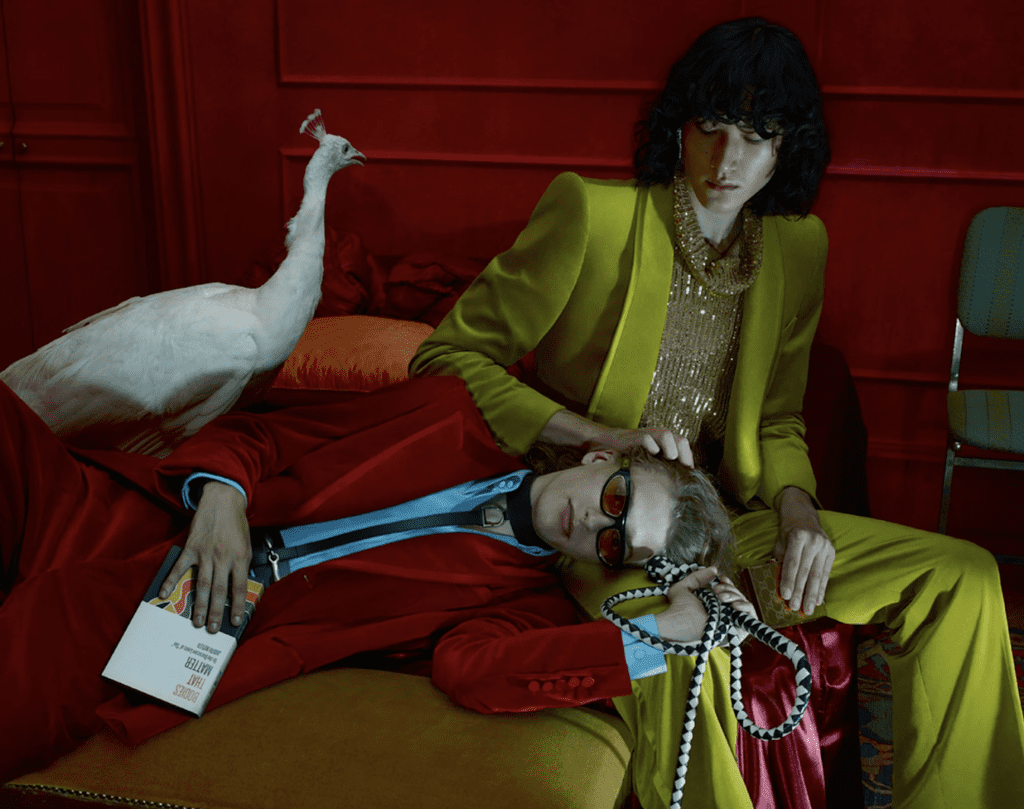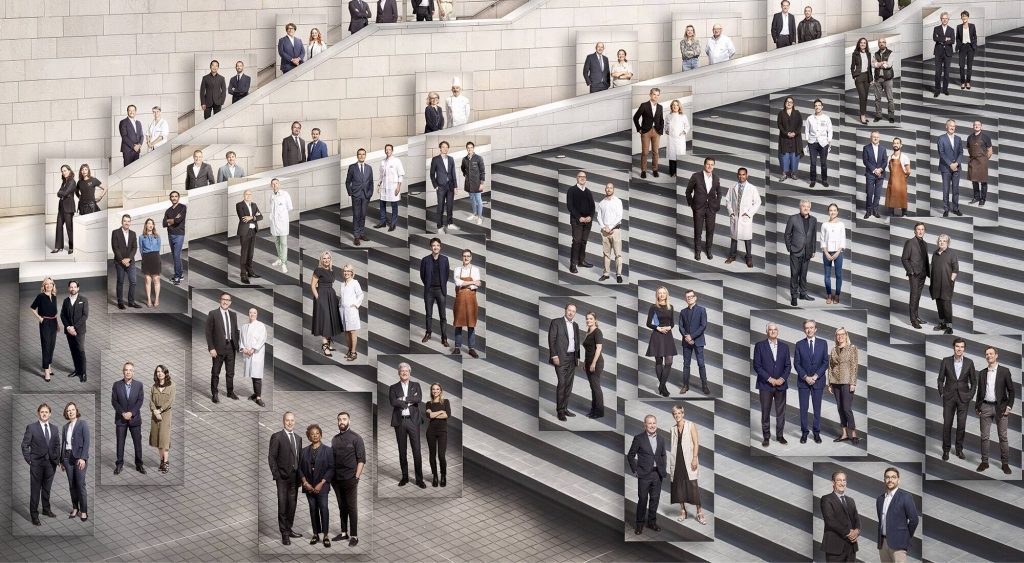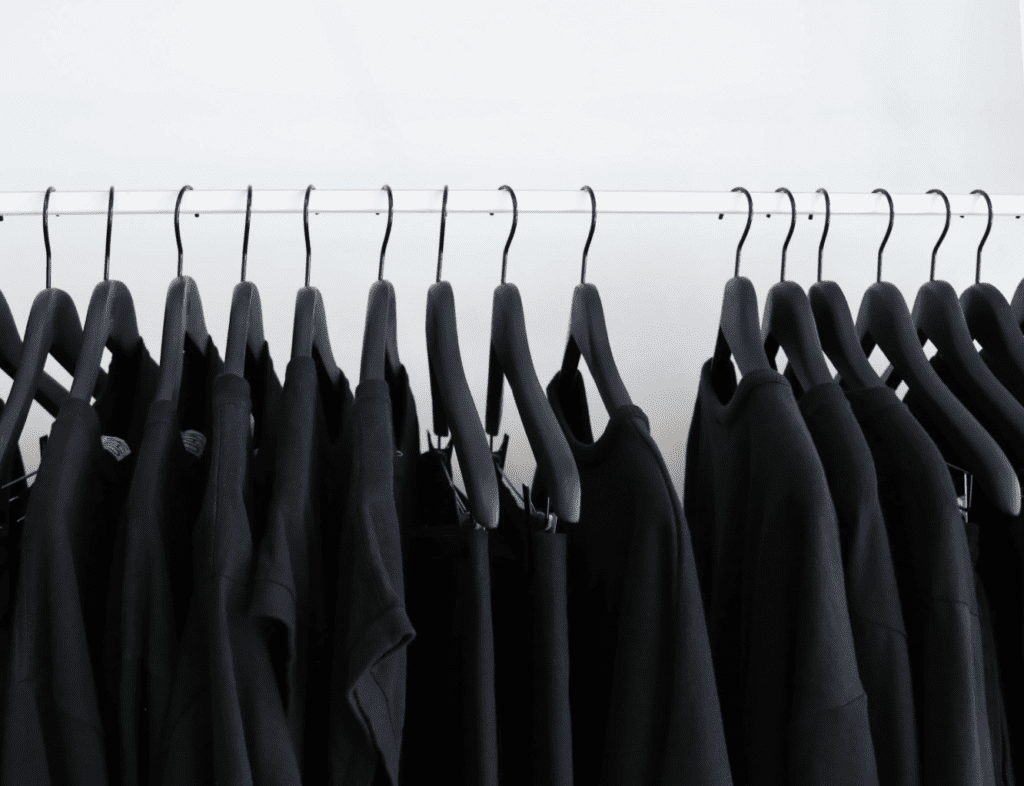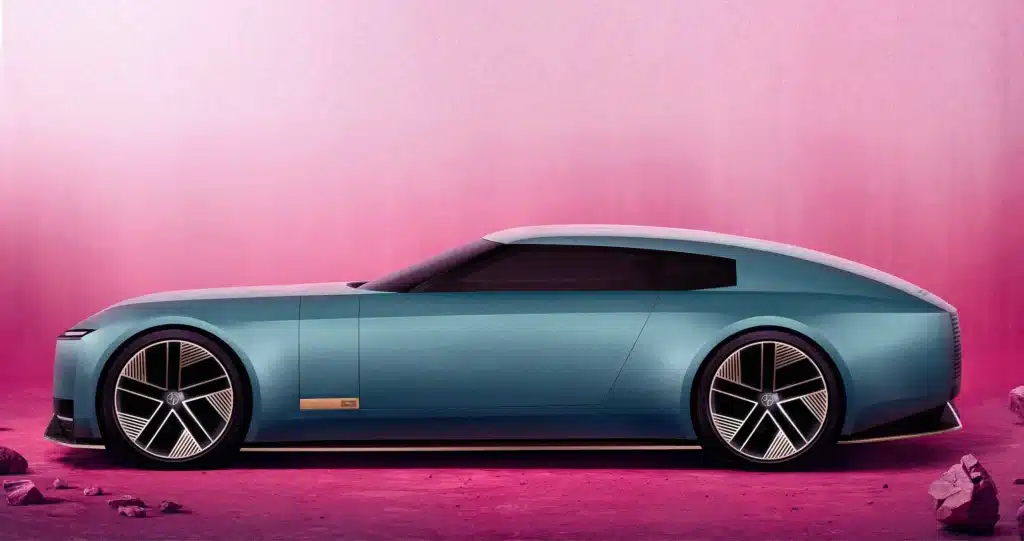Luxury sales may be readily rebounding from the COVID-19 crisis, but the value of the brands, themselves, is still down 5 percent compared to last year. According to Brand Finance’s recently-released Luxury & Premium 50 report, the total value of the world’s top 50 most valuable luxury and premium brands has fallen from $227.1 billion in 2020 to $219.5 billion in 2021, as the pandemic continues to “damage brand values across the luxury & premium sector.” Most high-end apparel and accessories brands, which make up the majority of the names on the annual list, “recorded a brand value loss this year,” save for a handful of noteworthy exceptions.
In furtherance of its attempt to assign monetary figures to companies’ “brand value” (i.e., “the value of a company’s trademark and associated marketing intellectual property within the branded business,” including intangible assets that are “intended to identify goods, services or entities, [thereby], create distinctive images and associations in the minds of stakeholders, and generate economic benefits”) and rank key players by those values, Brand Finance put Porsche at the top of its Luxury & Premium list again this year. “Germany’s Porsche is by far the most valuable luxury & premium brand with a brand value of $34.3 billion,” according to the London-based consultancy, considerably ahead of second-ranked GUCCI (brand value down 12%).”
While a luxury fashion brand did not take the top spot, with Porsche earning top marks thanks to its “aims to maintain the traditional aspects that the brand is known for, as well as undertaking the shift towards sustainability through the launch of the Taycan,” which totaled over 20,000 units sold last year, despite a six week pause in production due to the pandemic, brands in this sector do command most of the spots on the top 10 list. Gucci again nabbed the number 2 spot with a brand value of $15.6 billion; Louis Vuitton remained in the number 3 position again this year with a brand value of $14.86 billion (down by almost 10% on a year-over-year basis); Chanel came in at number 4 with a value of $13.2 billion (up by 3.4%); Cartier at number 5 with a value of $12.1 billion (down 19.5%); Hermès at number 6 with a value of $11.7 billion (down 2.1%); and Dior again took the number 9 spot with a value of $7.8 billion (up by almost 14%).
On a separate metric, brand strength, which centers on “marketing investment, stakeholder equity, and business performance,” the top 5 ranking looked similar to last year’s, with Ferrari and Rolex taking the top two spots. Italian outerwear-maker, which has been a staple on Brand Finance’s various lists in recent years, is in the number 3 position, followed by Gucci in number 4, and Hermès in 5. Addressing Rolex’s top-2 position, Brand Finance states that “despite the challenges of the last year, the market for luxury watches has shown remarkable resilience to the pandemic turmoil, with demand remaining stable, demonstrated by Rolex’s website traffic experiencing a surge over the previous year.”
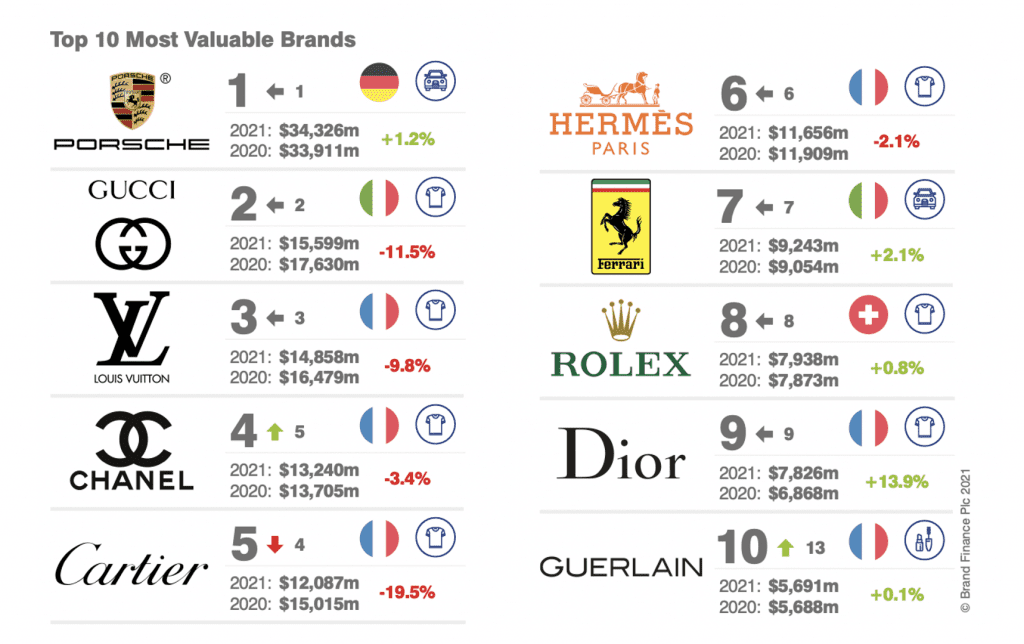
Among the luxury and premium brands that it highlights as striking, Brand Finance points to Coach, which recorded “the biggest drop in brand value this year in the apparel subsector, falling 31 percent to $4.7 billion, as its “sales and profits have taken a hit over the previous year.” Burberry, Bottega Veneta, and Prada are also among the brands that saw the biggest negative brand value changes between the 2020 and 2021 reports, down by 25.7 percent, 25.3 percent, and 21.4 percent respectively.
On the other hand, Celine is “bucking the trend,” and nabbed the title of “the fastest growing luxury and premium brand this year , recording an impressive 118 percent brand value increase to $1.5 billion and simultaneously jumping 13 spots to 34.” Under the watch of creative director of Hedi Slimane, Brand Finance states that “Celine has successfully managed to infiltrate the burgeoning Gen Z generation across the Asian market as it rises in popularity thanks to dressing popular K-drama characters in its garments.” (Celine took the fast growing title from LVMH Moët Hennessy-Louis Vuitton-owned brand Givenchy, which grew the fastest, according to last year’s report.)
Some other interesting takeaways from the latest report include the rise of Dolce & Gabbana, whose brand value is up by 35.3 percent, enabling the Italian fashion house to take a spot in the top 50 (up 2 spots from last year to 46) following PR fall out in recent years that is seemingly fading based on this ranking, for one thing, as well as the (sponsored) celebrity turnout at its recent couture catwalk show and the return of the brand to major red carpets across the globe. Valentino is also on the up, growing by 17 percent in terms of brand value on a year-over-year basis.
The sweeping revamp that is currently underway at Tiffany & Co. since the New York-based jewelry company was bought up by LVMH has not impacted the brand’s value (yet), as it has remained in the number 12 spot again this year without any notable change.
A “New Era” for Luxury
Reflecting on the luxury market as a whole, which is in the midst of a “new era,” Brand Finance asserts that “the pivotal role of brand in consumers’ purchasing decisions also makes the luxury sector” – which it defines as consisting of “brands that are well known for high quality but are not widely considered or purchased due to price” – one of the “most resilient.” Among the changes that have been brought about as a result of the “economic climate and customers’ shifting preferences,” including as a result of the pandemic, Brand Finance states that brands are increasing their focus on connecting with local consumers, particularly since “prior to the pandemic, 20 to 30 percent of the revenues for the luxury sector were made abroad.”
At the same time, the firm points to brands’ efforts to meet consumers’ “expectations for transparency and sustainability.” With Millennials and Gen Z, who are “undeniably the more socially-conscious demographics, driving more than 80 percent of global luxury revenues,” Brand Finance states that it is “essential for brands to authentically align their activities and messaging to resonate with their target segment.”
In the same vein, it notes that the “growing [resale] segment creates an opportunity for brands to compete with the big online retailers, [which are] now monopolizing the space,” i.e., The RealReal, Vestiaire, and co., “by creating tailored experiences to consumers.” In addition to being “a more socially conscious [way of shopping],” Brand Finance states that thanks to the robust resale market, “millennials and Gen Z are making aspirational purchases, whereas the older generation is increasingly starting to see luxury as an investment through collectable purchases with the goal of reselling it at a higher value.”
Taken as a whole, Brand Finance’s Valuation Director Alex Haigh says that brand value is an important and useful metric, particularly in the luxury and premium industry, which is “one of the most compelling examples demonstrating the power of brands.” Consumers’ desire to develop “a strong sense of belonging and the connection of a brand to lifestyle is one of the most powerful outcomes of branding and an undeniably powerful revenue driver.”




